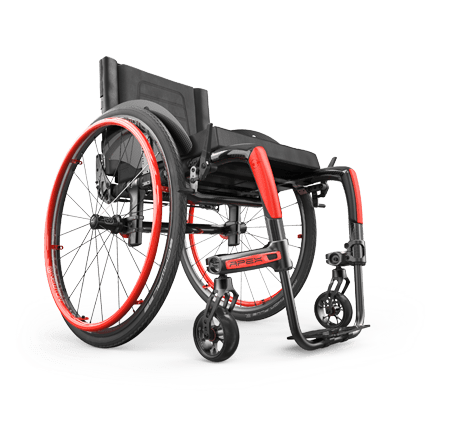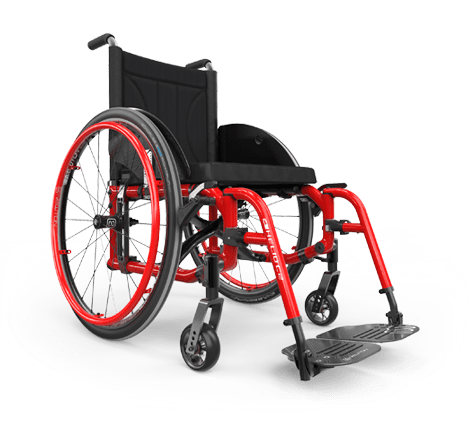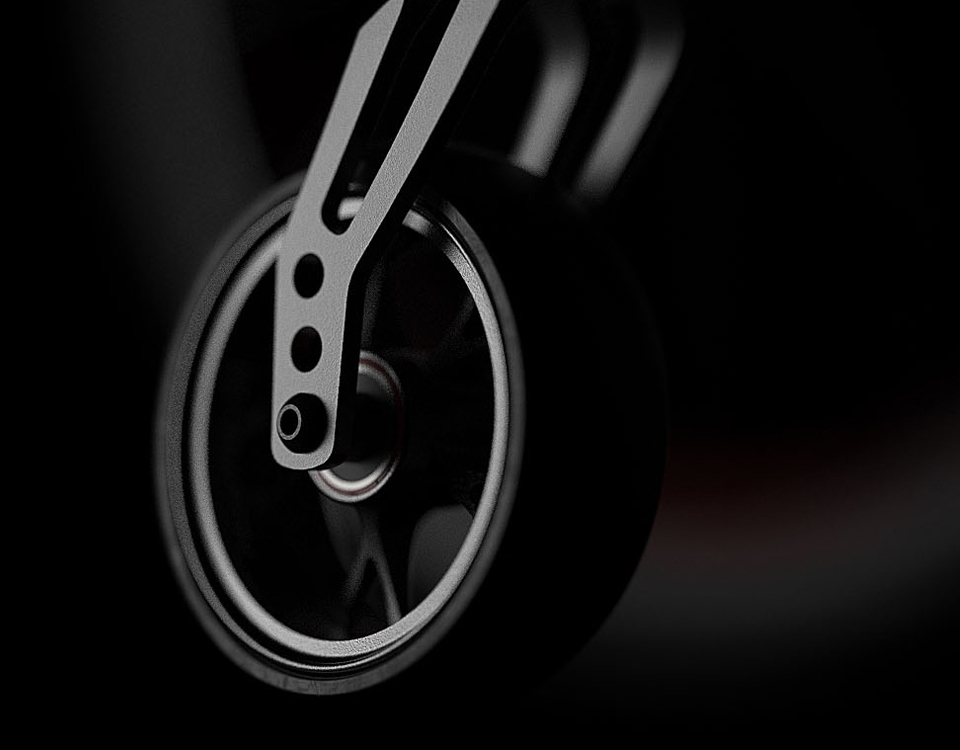Just how significant are those small wheels on the front of your wheelchair? Very! Casters are:
- The first point of contact within a new environment
- A large influence on the ride characteristics of the wheelchair
- Setup to have a direct effect on the efficiency of propulsion for the end user
- Directly impacting the front seat-to-floor height and the lower extremity positioning options
There are many components to consider when selecting the type of caster that is the correct one for an end user. Here, we will review how lifestyle, size, material, and caster type can increase wheelchair efficiency.
LIFESTYLE
When selecting a caster, you must first consider the end-user lifestyle; Will the wheelchair be used outdoors? Or for in-house use only? Does the user have a long commute to get to the office every morning and accessibility considerations along the way? Does the user need precision from the wheelchair while maneuvering through your household? These are very important questions to consider when selecting front casters as they will impact the daily use of the manual wheelchair and the proper selection can result in more efficient propulsion.
There is no right caster for everyone but rather a caster that is right for a specific circumstance and lifestyle preference. Caster performance is dependent on surface type and weight distribution and therefore we need to understand the balance between performance and function for each user. Lifestyle, end-user capability, and daily use are great indicators to dictate this balance.
SIZE
The size can be broken down into two subgenres—Diameter and Width.
Diameter
The diameter of your caster will have an impact on the front frame/hanger angle as well as your front to seat floor height; a larger diameter will allow for a higher front seat to floor height and therefore may require a greater front frame angle for proper configurations. The same goes for the smaller diameter casters but with the opposite effect; it can allow a lower front seat to floor height and less of a front frame angle can be achieved.
A larger diameter caster will make it easier for the end user to roll over obstacles and maintain propulsion speed, while the smaller options will give more precision point versatility in terms of turning radius and decreasing caster footprint.
Width
The width of the caster also plays an important role. A narrow caster will decrease rolling resistance and are ideal for smooth surfaces. Meanwhile, a wider caster will increase the rolling resistance due to the surface area and friction involved while propelling. However, wide casters can also improve the ability to roll over obstacles and softer/varied surfaces and can therefore be more desirable in an outdoor environment.
If a wider width caster is chosen, it can allow for a smaller caster diameter than if selecting a narrow caster. This will maintain similar propulsion on varied surfaces. Typically, within our industry, a good rule of thumb for new users is 5” casters display the best rolling resistance.
CASTER TYPE
Standard
The standard front caster is the most common selection because of its relatively low maintenance and generally smooth ride. This is the most “average” of options when considering how you plan to use your chair in terms of material durability and 1″ width.
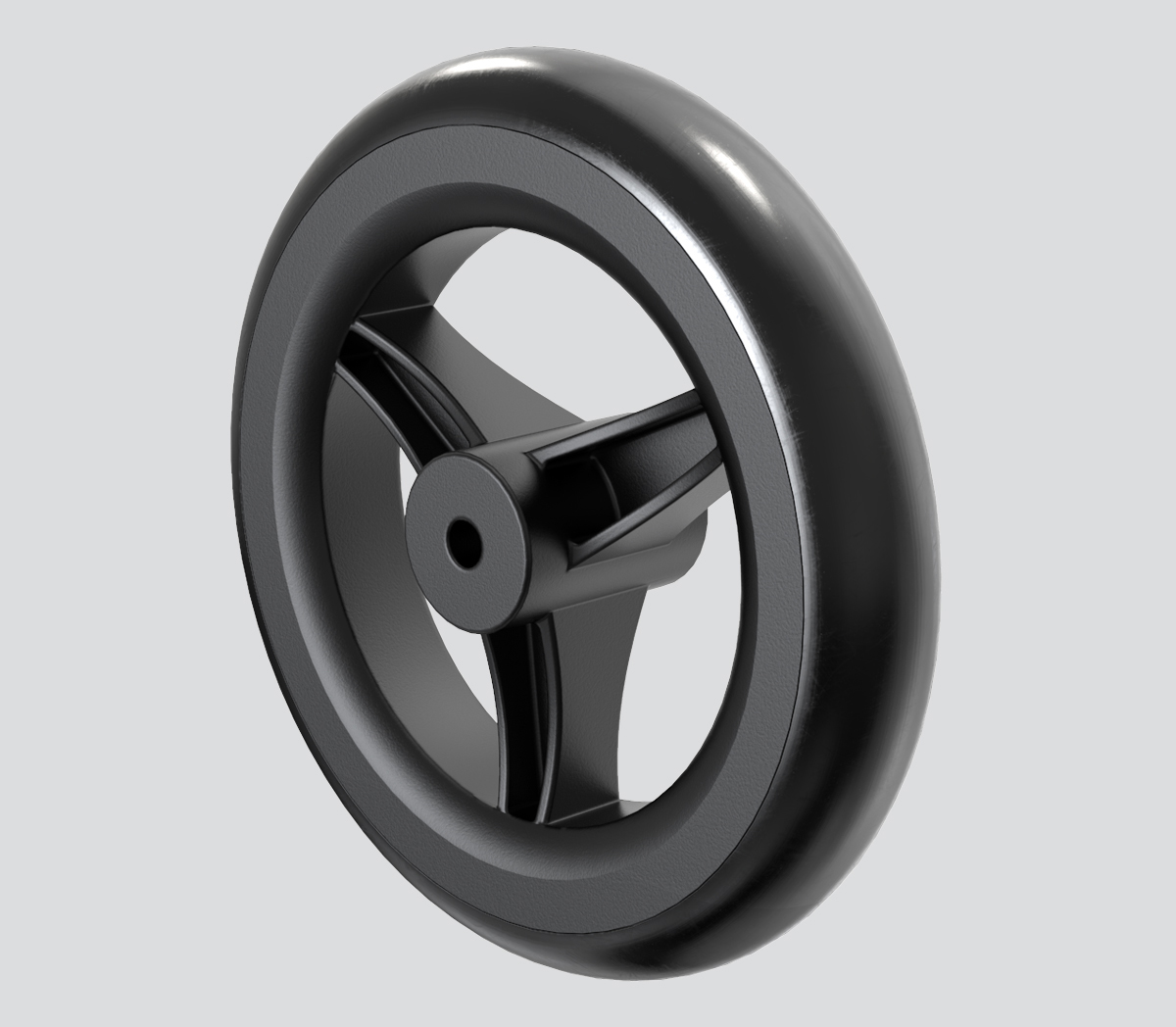
Photo: Composite wheel with PU tire (1" width)
Soft Roll
The soft roll has a unique shape compared to the standard caster. The convex shape allows the protruding center area to allow efficient propulsion on hard surfaces like a narrow caster and the wider width allows for efficiency and pressure distribution on softer, more uneven terrain. The soft rubber material improves ride characteristics, but depending on the environment, they may need to be replaced more often than traditional casters.
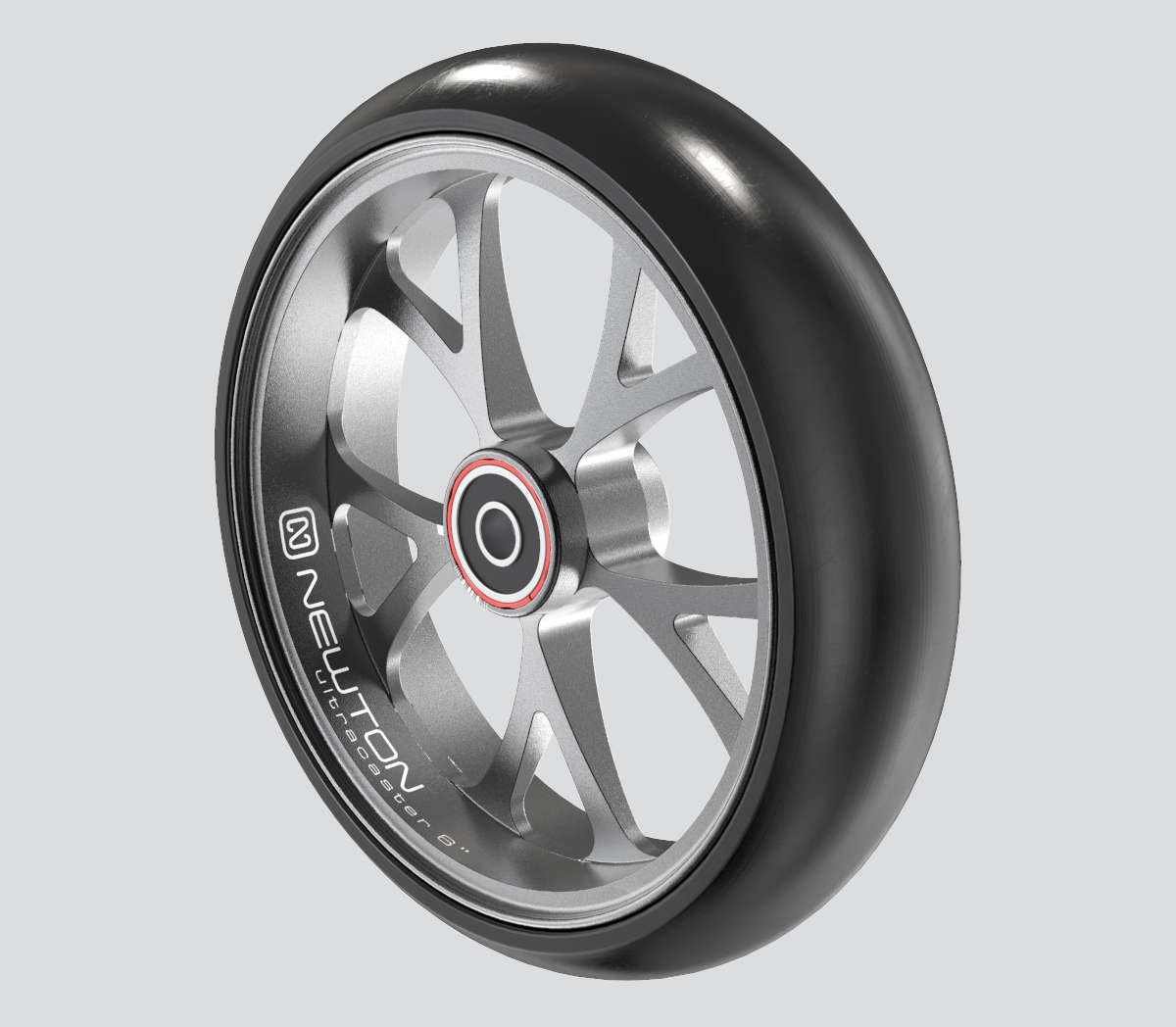
Photo: Newton UltraCaster Soft-Roll aluminum
Pneumatic
A pneumatic front caster is the least popular of the caster options for manual wheelchairs because it requires extra maintenance as tire pressure relies on the amount of air that is in each caster. Air pressure must be checked consistently and maintained for proper propulsion efficiency. There is also the risk of catastrophic failure with pneumatic tires. The benefit of choosing pneumatic front caster is that when maintained correctly, they provide a very smooth ride which can provide clinical benefits and they can overcome small obstacles with ease.
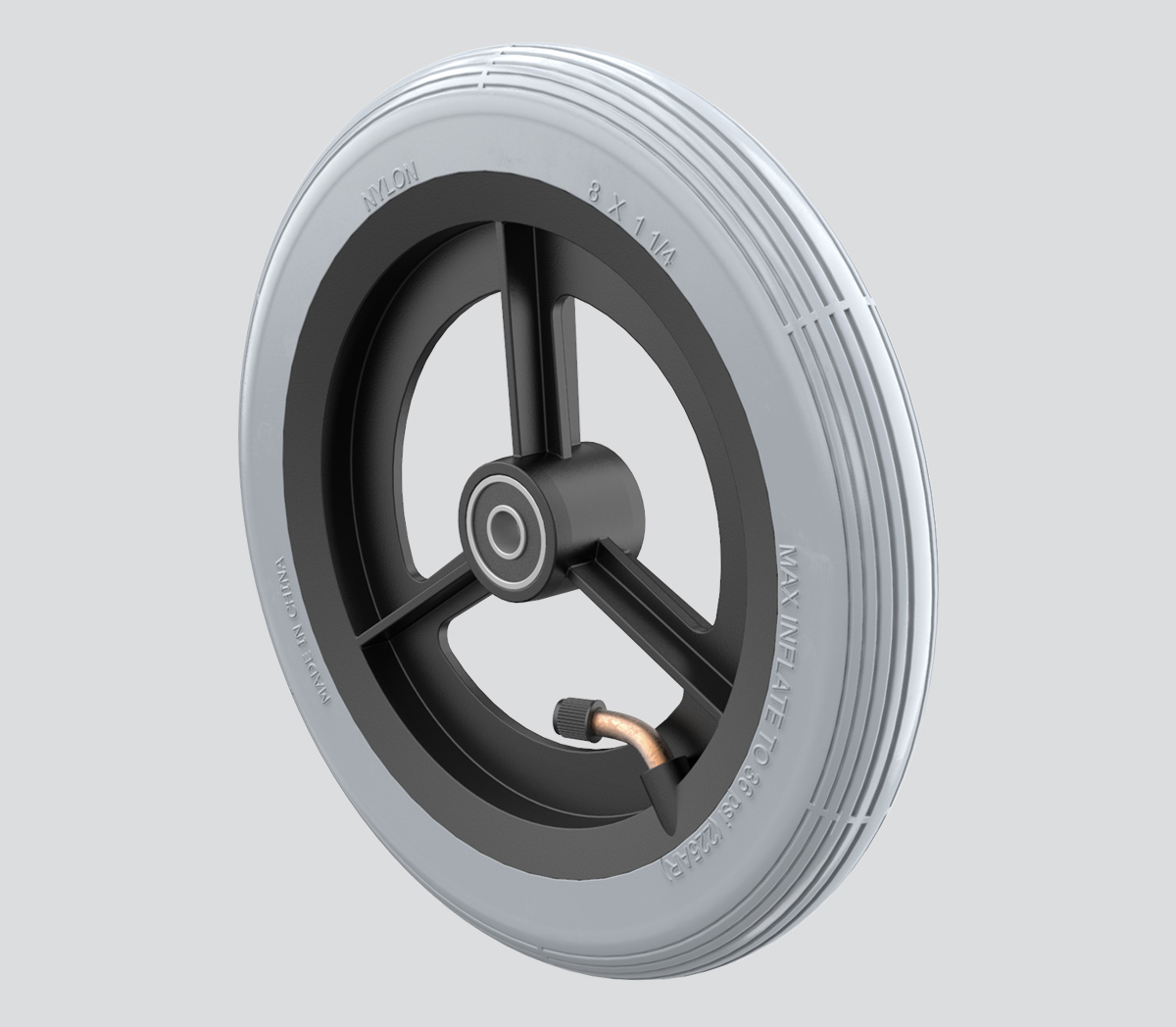
Photo: Pneumatic casters
Hub Material
In terms of caster hub material, there really is no “gold standard” in the wheelchair industry, it tends to fall under use preference. A composite or plastic hub is going to be lighter than its aluminum/metal alloy counterpart. Aluminum/Metal Alloy wheel hubs are great for active users and difficult terrain due to the increased durability.
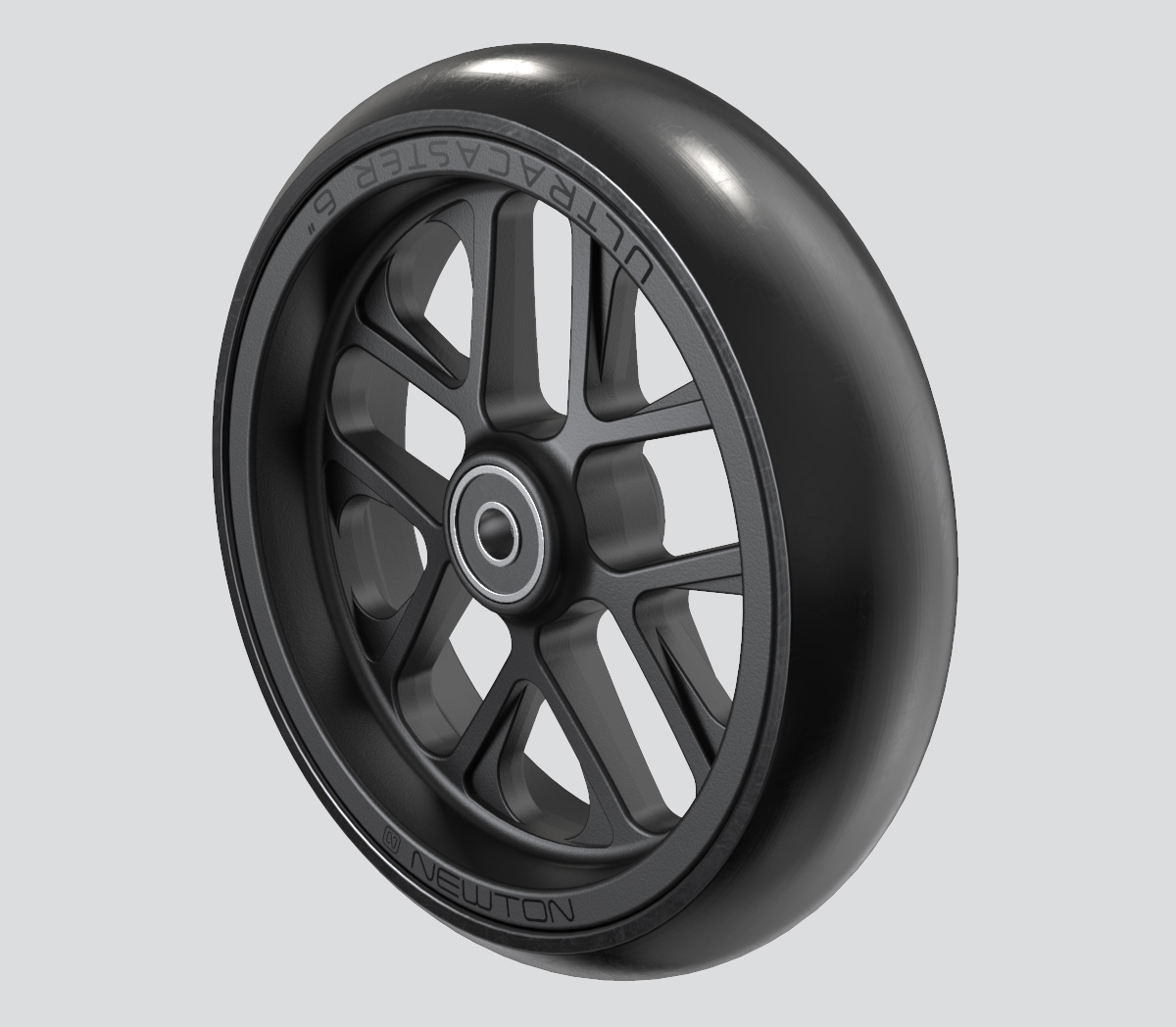
Photo: Newton UltraCaster Soft-Roll composite
OTHER OPTIONS AND SET UP
Caster Forks and Stems
When selecting forks and stems options, it is essential to choose the combination that gives you the proper seat to floor height. If you have a choice, a longer stem bolt and a shorter fork will make it easier for adjustability, potentially extend caster life, reduce flutter, and will have an overall better look at the front of your chair. Increasing the size of the fork can impact the overall turning radius as well as potential interference with other components of the chair.
Trail of Casters
Caster trail is the distance between the point of the ground directly beneath the caster fork stem and the point at which the caster tire meets the ground. A longer trail will decrease the chance of flutter at high speeds. With a longer fork option, you can increase the trail of the caster, which can lead to a greater likelihood of flutter. A larger wheel will typically have a shorter trail; therefore, they begin to flutter at slower speeds. On the other spectrum a small trail due to a short fork and short caster has less flutter than the same trail of a larger wheel. However, the smaller caster choice can be harder to maneuver and should be used with experienced users. The balance should be based on the criteria made during your client evaluation.
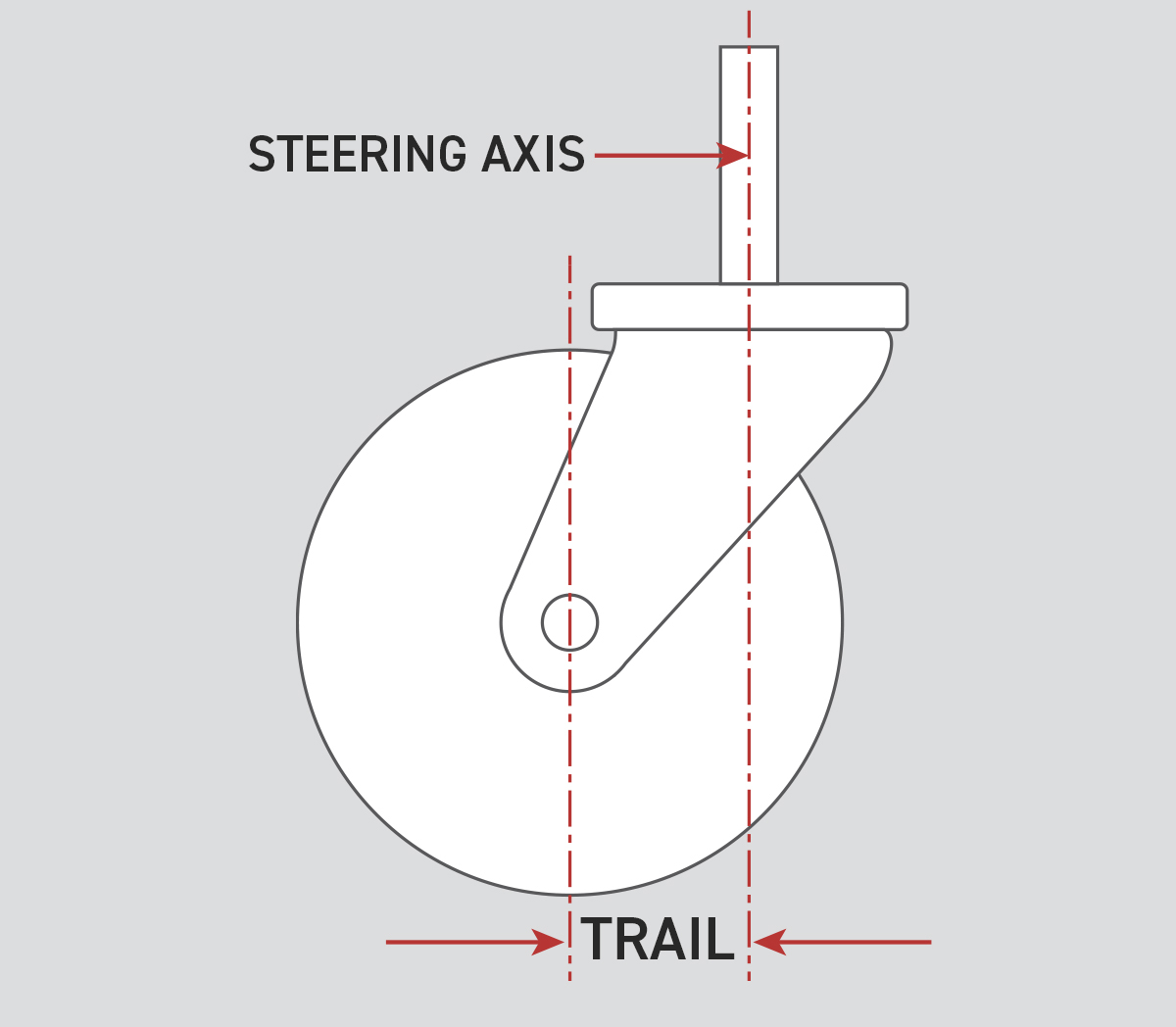
Other tips to decrease caster flutter are as follows:
- Maintain tension at the swivel axis and the caster’s spinning axis. This inhibits unnecessary movement with no additional resistance.
- Caster alignment always needs to be 90 degrees to the ground; a “Squaring the Angle of your Caster Housing” document can be found here.
- Decrease in weight, heavier casters will flutter sooner at high speeds
Overall, there are many aspects to consider when selecting casters for a manual wheelchair. Matching the product with a specific user and environment will allow for ideal outcomes. Some key points to remember when deciding on caster selection:
- Selection is going to be user specific
- Configuration WILL affect efficiency and maneuverability
- Consider the functional environment
- Wheelchair skills and experience will impact your selection
It is a give-and-take between efficiency and environment: you must find the right balance




